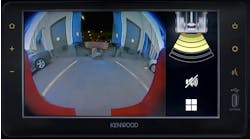So how do software-based driver screening systems change the recruiting process for a carrier? Based on conversations with different providers, these systems are designed to first quickly pare down the initial pool of driver candidates by finding the obvious “knockouts,” then segmenting the remaining drivers based on specific criteria the fleet wishes to establish — all performed online with a minimum of paperwork on the part of the recruiter.
“We call it a phased approach,” says Dale Reagan, vp-sales for Tulsa, OK-based Tenstreet LLC. “Our Xpress applicant tracking system is bundled with USIS and their DAC reports, allowing fleets to get a volume discount instead of ordering them a la carte.”
In phase one, a driver submits an application by email, fax or phone and that information is uploaded into the system. A quick initial search packet of criminal databases, MVRs and basic DAC reports establish — usually within a day — if the recruiter can proceed with the full hiring process. “You are looking for the obvious ‘knockout’ in this phase — a felony conviction, major accident … the kind of information that immediately shows the fleet it can't hire this driver,” says Tim Crawford, Tenstreet's president.
In phase two, the questions Tenstreet incorporates on its standard application form, which can be customized if fleets want to add more specific criteria, helps establish an applicant “score” in combination with MVR and DAC report information. At this stage, any gaps in employment are discussed, along with any possibly incorrect DAC information. Drug and alcohol tests and DOT compliance are part of phase two. In this way, fleets minimize the time and expense this level of reporting brings to a smaller, prequalified group of potential hires. “In the future, at this stage, fleets will actually be able to help drivers start DAC report corrections,” says Reagan.
Drivers also use a DOT-approved digital signature at this stage to allow the fleet to access their records and further speed up the application process — all without sacrificing data integrity or regulatory compliance. “This is where you can go from a three or more day process down to several hours, simply by speeding up the delivery of reports and record searches,” he says.


